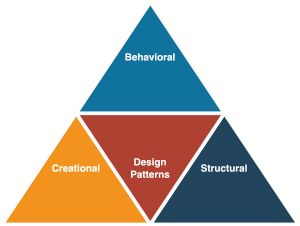Demystifying Design Patterns: Building Robust and Maintainable Software
Welcome to the world of software design patterns, where ordinary code transforms into extraordinary solutions! If you’ve ever wondered how tech wizards create robust and maintainable software that stands the test of time, then this blog post is your ultimate guide. We’re here to demystify those elusive design patterns, unravel their secrets, and equip you with the knowledge to take your coding skills from good to exceptional. So buckle up as we embark on a journey through the enchanted realm of design patterns, transforming mere lines of code into masterpiece architectures!
What is Software Design?
Software design is the process of planning and creating a software system or application. It includes the establishment of objectives, the development of functional and non-functional requirements, and the creation of a software architecture.
Design patterns are solutions to common software design problems that occur during the development of an application. They provide a way to improve the maintainability and extensibility of an application by abstracting away implementation details. Design patterns can be used to solve problems such as:
Establishing communication between objects
Determining how data should be represented and accessed
Maintaining state information for an object or system
Performing input/output operations
Different Types of Design Patterns
There are three main types of design patterns: creational, structural, and behavioral.
Creational patterns focus on object creation mechanisms, which improve the flexibility and maintainability of a software system by making it easier to add new classes of objects. The most popular creational pattern is the Factory Method.
Structural patterns focus on relationships between objects, or the ways in which objects can be composed to form larger structures. The most popular structural pattern is the Adapter.
Behavioral patterns focus on algorithms and the assignment of responsibilities between objects. The most popular behavioral pattern is the Observer.
Exploring the Structural Patterns
Design patterns have been proven to be an effective way to improve software development. They provide a common language that developers can use to communicate with each other. Design patterns also help improve code quality by making it more maintainable and easier to read.
There are three main types of design patterns: creational, structural, and behavioral. Creational patterns focus on the ways in which objects are created, while structural patterns deal with the ways in which objects are composed. Behavioral patterns are concerned with the ways in which objects interact with each other.
The ‘Exploring the Structural Patterns’ section of this blog article will focus on how to use design patterns to build robust and maintainable software. In particular, we will look at three popular structural patterns: the Model-View-Controller (MVC) pattern, the Model-View-ViewModel (MVVM) pattern, and the Presentation-Abstraction-Control (PAC) pattern. Each of these patterns has its own strengths and weaknesses, but all three can be used to build software that is both robust and maintainable.
Examining the Behavioral Patterns
When it comes to software design patterns, there is a lot of debate about what works and what doesn’t. However, one thing that most experts agree on is the importance of examining the behavioral patterns of your software. By understanding the different ways that your software can behave, you can make informed decisions about how to design it in a way that is both robust and maintainable.
There are several different types of behavioral patterns that you should take into account when designing your software. The first is the sequence of events that occur when using your software. This includes everything from how users navigate through your interface to how data is processed internally. It’s important to understand how these events interact with each other so that you can design your software in a way that minimizes errors and makes it easy to use.
Another important aspect of behavioral patterns is how your software handles exceptions. This includes things like unexpected input, network failures, and other unexpected conditions. By understanding how your software will handle these situations, you can make sure that it remains stable and functional even in the face of adversity.
You should also consider the ways in which your software will be used in the future. As new technologies and trends emerge, you need to make sure that your software will be able to adapt and change along with them. By keeping an eye on the future, you can ensure that your design pattern choices are always up-to-date and relevant.
Creating Robust and Maintainable Code with Design Patterns
Design patterns are a powerful tool for creating robust and maintainable code. By following a few simple rules, you can easily create code that is both easy to understand and maintain.
1. Avoid duplication: Duplicate code is difficult to maintain and debug. When you find yourself duplicating code, it is time to refactor your code using a design pattern.
2. Encapsulate change: Code that is difficult to change is also difficult to maintain. Design patterns help you encapsulate change so that you can easily make changes to your code without breaking existing functionality.
3. Favor composition over inheritance: Inheritance can be a powerful tool, but it can also lead to fragile code if not used correctly. Composition is usually a better solution for creating maintainable code.
4. Keep it simple: The simplest solution is usually the best solution. Over-complicating your code will make it more difficult to understand and maintain.
If you follow these simple rules, you will be well on your way to creating robust and maintainable code with design patterns!
Examples of Design Pattern Applications
There are many examples of design pattern applications. The most commonly used design patterns are the Singleton, Observer, and Factory patterns.
The Singleton pattern is used to ensure that only one instance of a class is created. This is often used for classes that manage resources such as database connections or thread pools.
The Observer pattern is used to notify interested parties when an event occurs. This is often used in GUI applications to update the display when the underlying data changes.
The Factory pattern is used to create objects without specifying the concrete class to be instantiated. This is often used when the decision of which class to instantiate is made at runtime based on input data.
Pros and Cons of Using Design Patterns
Design patterns are frequently used in modern software development. They provide a way to standardize code and improve its maintainability. However, there are also some drawbacks to using design patterns. Let’s take a look at both the pros and cons of using design patterns.
One of the main advantages of using this patterns is that they can help make code more robust. Design patterns provide a well-defined structure for code, which can help prevent errors and make it easier to debug if problems do occur. Additionally, following a consistent pattern can make code more readable and understandable, which is helpful for both developers and users.
However, there are also some disadvantages to using design patterns. One potential downside is that design patterns can sometimes be overused, which can make code less flexible and more difficult to change. Additionally, if not used correctly, design patterns can actually make code more complicated instead of simpler. It’s important to carefully consider whether or not design patterns are appropriate for your project before implementing them.
Conclusion
Design patterns have proven to be a helpful way of making sure that software operations and designs remain robust and maintainable for the long term. This article has shed some light on the different types of design patterns, along with their strengths and weaknesses. With this knowledge in hand, developers should feel confident in identifying which type best suits their needs and developing code that is both efficient and effective.





